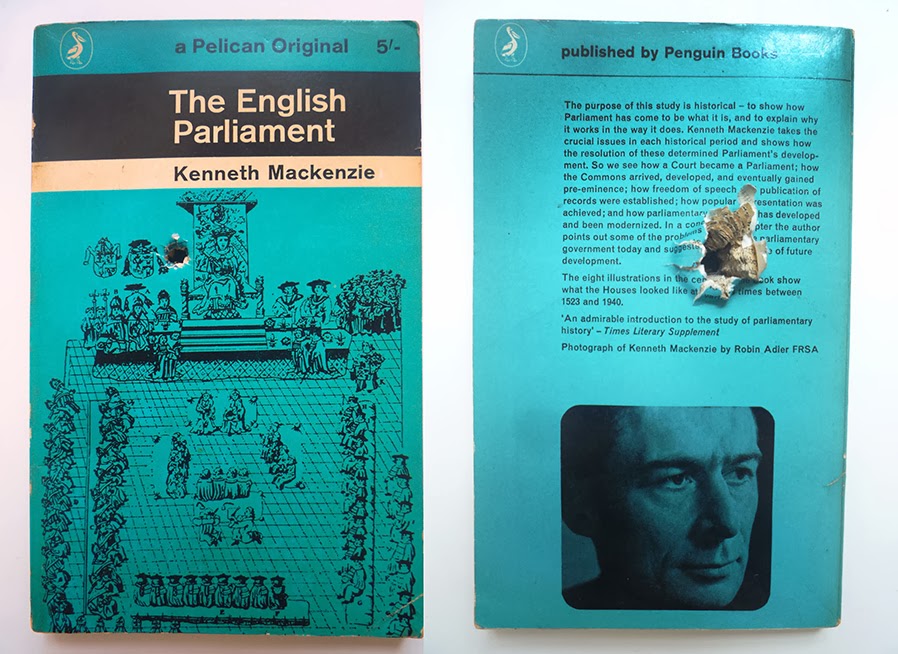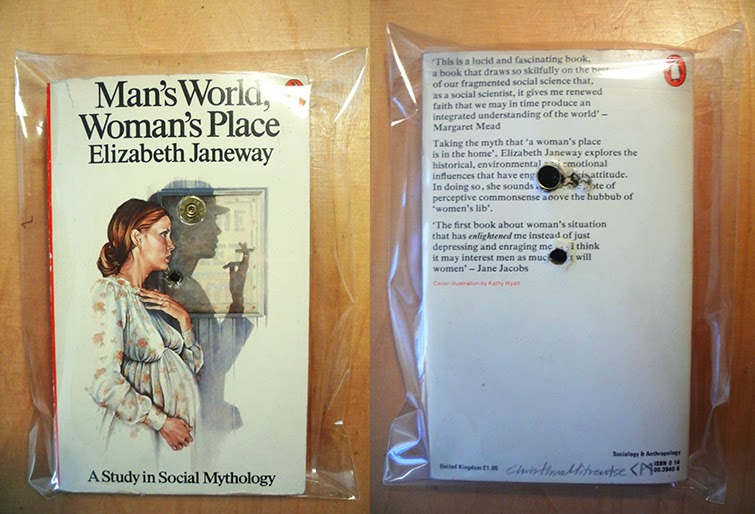22/12/13
Christina Mitrentse’s Wounded Books Series as a Metaphor for
(Re-)Incarnation
Christina Mitrentse
(born 1977, Greece) began her Wounded Book series as a response to her
contribution to the Inventory of Al-Mutanabbi Street project, organised by Beau
Beausoleil in 2010, to reflect on the damage to humanity and the loss of
material knowledge caused by the car bombing in Baghdad’s booksellers’ street
on 5 March 2007. Being an artist who works in series, unsurprisingly this one has
continued to grow, and it has since been added to Mitrentse’s own ongoing
project initiative, Add To My Library, vol. III.
Selecting from the Penguin Classics library, Mitrentse
chooses books which are either literature, whose content she deems
to have failed for various reasons, or visual art books, which she has found
inspiring. She then takes these books to the Rifle and Pistol Club at Imperial College
Union, London, where, under licensed conditions, she shoots them, one by one,
with a rifle. The resulting “wounded” book is then displayed, sealed in
plastic, with both its front (with a neat site of penetration) and back (with a
larger, rippled, raised and ruptured exit site) cover visible.

Mitrentse speaks of her “performative act” (which she describes as “absolutely not vandalism”,
rather a “strange kind of homage”) as “explor[ing] the possibilities opened up
by conceptualist approaches to writing and performative approaches to reading
within contemporary society and the subjection to the advanced capitalism in
which it exists.” She further suggests that it is “an intellectual statement on
the relationship of Information as Material.” Nevertheless, she also wishes to
leave “as much space as possible […] open for interpretation”, since “selecting,
destroying and sharing the re-appropriated product, generates new interesting
meanings, and in doing so, disrupts the existing order of things, challenging readers’
desire for a single channel of explanation.”[i]
Indeed, the series is rich with potential meaning and metaphors, and, in
this short essay, I shall explore just one possible reading: seeing the wounds
as stigmata and the book as the body of Christ.

Looking at the broken surface, the perforated skin of the
books, the tears where they have strained against applied force, these exit
wounds could just as easily have been caused by nails, holding the weight of a
martyr’s body to a cross. The book, then, might be seen as mortal flesh,
suffering and dying at the hands of humankind. And, indeed, it is precisely so,
in the burgeoning of the digital age, where printed matter is losing its place
of former glory as information technology and the dematerialisation of
knowledge takes a hold.
I do not want to assume, however, that the book, as the body
of Christ, is necessarily masculine. Throughout medieval times, representations
of Christ – and the godhead itself – as feminine were common, particularly in
the writings of the 12th century monastics, Bernard of Clairvaux
and Hildegard of Bingen, and the 14th century theologian, Julian of
Norwich. With an implicit shift in theological emphasis from the model of atonement-resurrection
and last judgment to that of creation and incarnation, a feminine
representation of Christ was more able to emphasise his humanity.[ii]
Indeed, according to medieval physiological theory, itself
largely based on Aristotle’s classical medical theories, the
body was seen as female (with the mother providing the matter of the foetus)
and the spirit was seen as male.[iii] Here, then,
the book might be seen as the female mother and bodily flesh, and the bullet,
which penetrates, as male, and as the carrier of the spirit or content and
ideas.

The notion of Christ as mother is also
not new. Feminist scholar, Caroline Bynum, has written much on the subject,
bringing forward plentiful examples of medieval religious art to support her
arguments.[iv]
She sees his bleeding as a form of lactation, providing sustenance for others.
Here, I suggest, the bullet holes, rather than being equated with nipples, be
equated with the vagina, and thus the whole wounding process becomes a metaphor
for birth, or incarnation, with the bullet as both the seed and the offspring.
The rifle is the phallus which penetrates the book, which, in turn, gives birth
to the bullet, a small capsule
representative of the knowledge being transmitted. In a cyclical vision of
entropy, knowledge and ideas are never lost. They live on in a continual
cycle of transmission, suppression and reincarnation. The body or flesh is
insignificant and short-lived; the ideas, which may suffer attack and
modification in each “lifetime”, are, on the other hand, eternally passed on.

The books, in Mitrentse’s series, are thus emblems of
martyrdom; signifiers of the death of a medium or an incarnate form. Their
contents, although damaged, are never lost. The bullet, which penetrates and
harms them, attempting to destroy them, necessarily absorbs their content and
brings it full circle into a new birth, a reincarnation, in whatever form that
might be. The wounds remain – stigmata – a salient reminder of the power of
knowledge and our futile attempts to curb its dissemination.
[i] Interview with the artist by Christina
Grammatikopoulou, April 2012 http://interartive.org/2012/04/add-to-my-library-bcn/#sthash.i9W8M8hq.dpuf
[accessed 22 December 2013]
[ii] See Jenny Bledsoe, “Feminine Images of
Jesus: Later Medieval Christology and the Devaluation of the Feminine.” Intermountain West Journal of Religious
Studies 3, no. 1 (2011). http://digitalcommons.usu.edu/imwjournal/vol3/iss1/4
[accessed 22 December 2013]
[iii]
Caroline Walker Bynum, “The Body of
Christ in the Later Middle Ages: A Reply to Leo Steinberg,” Renaissance Quarterly 39, no. 3
(Chicago: University of Chicago Press, Autumn 1986) p.421
[iv] See ibid
and also Caroline Walker Bynum, Jesus as Mother: Studies in the Spirituality
of the High Middle Ages (Berkeley: University of California Press, 1982)
Images:
Christina Mitrentse
from the Wounded Books series
2012
© the artist